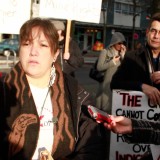“Agnotology” is a new and useful word coined in 1992 by Dr. Robert Proctor of Stanford University to designate the study of ignorance. We give a huge amount of attention to knowing, to “gnosis”, he contended, but little attention to its opposite, “agnosis” (Guardian Weekly, July 1/11).
At first glance, agnotology seems like an oxymoron. Surely, if we know something about not-knowing then we must have shed some ignorance? Precisely. And this is the interesting twist about agnotology. It is the deliberate and skilful cultivation and dissemination of not-knowing – doubt – for the specific purpose of manufacturing confusion. And one of its most famous practitioners has been the tobacco industry.
When the awful health effects of smoking were first suspected, the tobacco industry went into damage control by using misleading studies to advertise the benefits of smoking. But its more sophisticated strategy was to create doubt about the disadvantages of smoking. This was done with an ingenious deviousness. “It is less well known,” writes Dr. Proctor, “but tobacco companies also spent large amounts subsidizing good quality bio-medical research in fields such as virology, genetics and immunology. They funded the work of several Nobel prize winners. But they only encouraged this research to serve as a distraction.” The strategic objective was not to find the cause of cancer but to generate credible evidence that diseases attributed to smoking could be caused by something else. “In court cases involving the industry, its lawyers always highlighted viral risks, the pre-disposition of certain families, and so on, to play down tobacco-related risks.”
Sound familiar? “In fact,” writes the science historian Peter Galison of Harvard University, “those who seek to produce ignorance on a given topic generally advocate more research. The fact that all the details have not been resolved sustains the illusion of an ongoing debate on the whole subject. A key concern of American neocreationists is to ‘Teach the controversy’.” Or, in a memo from the tobacco company Brown & Williamson that phrases the strategy even more bluntly, “Doubt is our product.” The objective is to create the impression that doubt exists in the scientific community when, in fact, there is none on the basic issue.
While this strategy has been used to defend smoking and creationism, it has also been used to cast doubt on solid scientific evidence concerning acid rain, ozone depletion, species extinction, melting glaciers, ocean acidification and the larger issue of anthropogenic climate change. When Naomi Oreskes, a science historian from the University of California, was trying to understand the basis for criticism of her book, Merchants of Doubt, she found that three scientists were the primary source. They were founders in 1984 of the conservative George C. Marshall Institute, originally funded by the tobacco industry and more recently by fossil-fuel interests. This Institute is solely driven by a political ideology that takes umbrage with any science that interferes with America’s free-market economy and freedom-of-choice philosophy. Controlling global climate change requires constraints that the Institute construes as another form of the communist threat, a threat combatted with a sophisticated pseudo science that looks authoritative but isn’t.
So, how is the lay public to know the difference between real science and pseudo-science? This is the obvious problem created by agnotology and cultivated by those who want to propagate doubt. Some hints are obvious. First, pseudo-science tends to be contrarian, arguing against a momentum of scientific evidence reached by peer-reviewed research and careful empiricism. Second, those who have economic interests usually take a position that favours their profits – so follow the money. Three, use one of Einstein’s “thought experiments” to imaginatively extend the claim to its logical extreme – if the extremity is absurd then the claim is questionable. And four, consider ideologies. Pseudo-science usually supports a belief system. Real science is evidence-based and follows where the data leads, regardless of threats to paradigms of thought or to individual and corporate interests.
Now apply this information to any current, local or global issue. It might be the expansion of the Quinsam Coal facilities in Campbell River, the proposed Raven coal mine in the Comox Valley, the construction of the Northern Gateway oil pipeline from the Alberta tar sands to the West Coast at Kitimat, the threat to wild fish from sea-lice and disease emanating from open net-pen salmon farms. It might be climate change, ocean acidification, genetic engineering or pesticide use. Those with vested financial interests are inclined to construe evidence to support these interests by minimizing calculated risks, providing assurances of safety – however thin and speculative – and contesting scientific evidence by quibbling about details. Ideology can easily override considerations of public health, social benefit and ecological impact. Indeed, ideology can even colour any sense of evidence and perspective. And, as is now becoming obvious, manufactured doubt can cause environmental and social havoc.
Doubt is normal, healthy and useful. But it can also be exploited by ill-will, self interest and blind ideology. At some point in its confrontation with overwhelming evidence, it becomes obstinate, manipulative, dishonest and destructive. An awareness of agnotology may raise our discrimination sufficiently to discern the difference between legitimate assurances and deceit. The task is challenging and requires constant vigilance. But our future depends on it.






